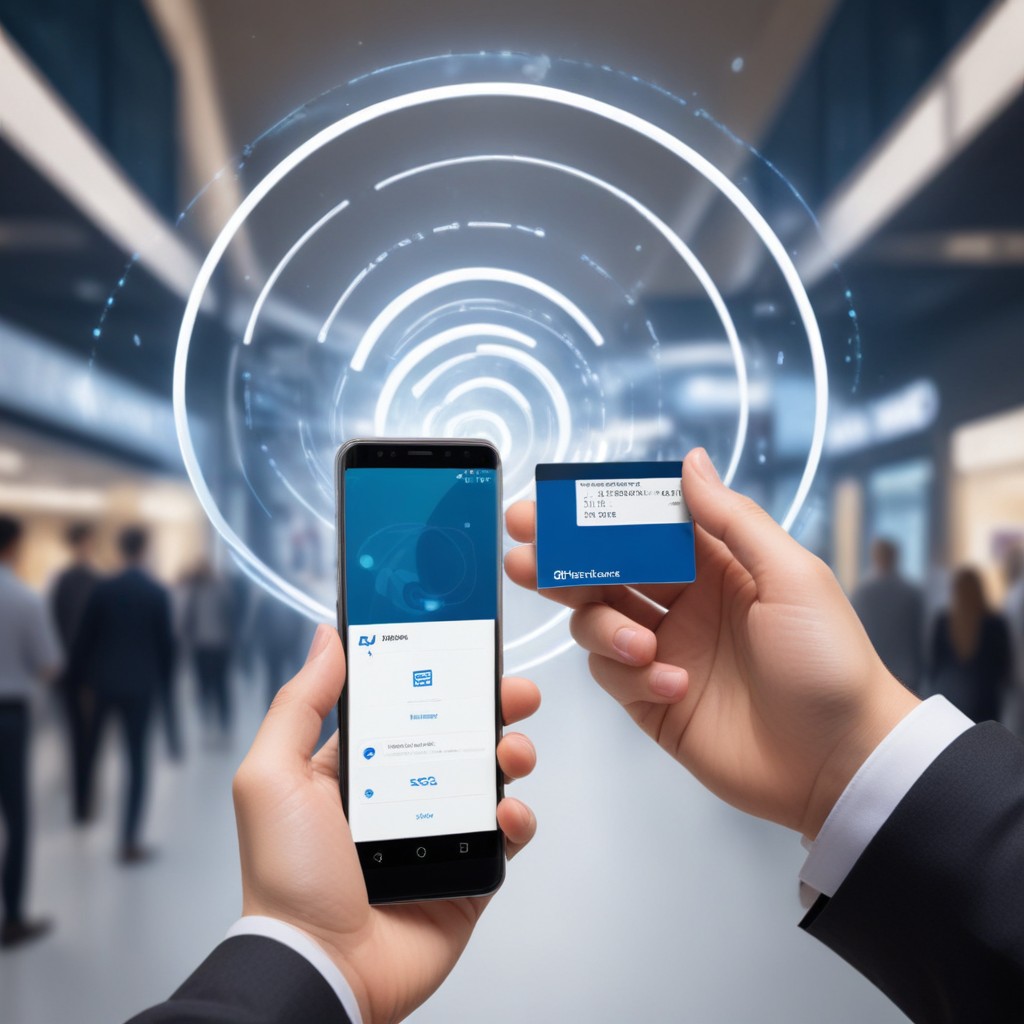
- May 14, 2024
- Tapcard
Exploring NFC: A Gateway to Seamless Connectivity
Near-field communication (NFC) technology has quietly integrated into our daily lives, revolutionizing the way we interact with devices and enabling seamless connectivity like never before. In this blog, we’ll delve into what NFC is, how we use it in everyday life, its core benefits, and some potential disadvantages, with a particular focus on its application in digital business cards.
What is NFC?
NFC is a short-range wireless communication technology that allows devices to exchange data when brought within a few centimetres of each other. It operates on the principle of electromagnetic induction, enabling communication between devices without the need for an internet connection. NFC-enabled devices, such as smartphones, tablets, and wearable gadgets, can exchange data with other NFC-enabled devices or NFC tags.
Everyday Applications of NFC:
Mobile Payments – One of the most common uses of NFC is in mobile payment systems like Apple Pay, Google Pay, and Samsung Pay. Users can quickly and securely make transactions by simply tapping their smartphones or smartwatches on NFC-enabled payment terminals, eliminating the need for physical cash or cards.
Contactless Ticketing – NFC technology is also prevalent in transportation systems, allowing commuters to pay for fares using contactless smartcards or their smartphones. Whether boarding a bus, train, or subway, NFC simplifies the ticketing process and reduces waiting times.
Access Control – NFC is widely used for access control in buildings, hotels, and events. Employees can use NFC-enabled ID badges to gain entry to secure areas, while event organisers can streamline attendee management by providing NFC wristbands or badges for entry.
Smart Home Automation – In the realm of smart homes, NFC tags can be placed on various objects or around the house to trigger specific actions. For example, tapping your smartphone on an NFC tag near the front door could automatically turn on the lights and adjust the thermostat.
Core Benefits of NFC:
Convenience – NFC offers unparalleled convenience by simplifying payments, ticketing, and access control tasks. With just a tap or a wave of a device, users can complete transactions or gain entry without fumbling for cash, cards, or tickets.
Speed – Transactions and data transfer via NFC are lightning-fast, making it ideal for scenarios where efficiency is paramount. Whether it’s paying for groceries or sharing photos between smartphones, NFC ensures swift and seamless communication.
Security – NFC transactions are encrypted and require close proximity between devices, reducing the risk of unauthorised access or interception. Additionally, many NFC applications incorporate biometric authentication methods like fingerprint or facial recognition for added security.
Application in Digital Business Cards – NFC technology is increasingly integrated into digital business cards, offering a modern and convenient alternative to traditional paper cards. By embedding an NFC chip into a business card, professionals can easily share their contact information, portfolio, or website with a simple tap of their smartphone.
Instant Access to Information – With NFC-enabled digital business cards, recipients can instantly access the sender’s contact details, social media profiles, or portfolio without the need for manual data entry. This streamlined process enhances networking efficiency and ensures that vital information is readily available.
Enhanced Impressions – Digital business cards with NFC capabilities leave a lasting impression on recipients, showcasing the sender’s tech-savvy and innovative approach to networking. The seamless exchange of information via NFC demonstrates professionalism and forward-thinking, setting the sender apart from competitors.
Eco-Friendly Solution – In addition to being convenient and impressive, NFC-enabled digital business cards are also environmentally friendly. By reducing reliance on paper-based cards, professionals can contribute to sustainability efforts and minimize their ecological footprint.
Potential Disadvantages of NFC:
Limited Range – While essential for security, NFC’s short-range communication capability limits its practicality for specific applications. For NFC to work, devices must be within a few centimetres of each other, which can be inconvenient for tasks requiring longer-distance communication.
Compatibility Issues – Although NFC is becoming increasingly prevalent, not all devices support the technology. This lack of universal compatibility can hinder widespread adoption and limit the interoperability of NFC-enabled systems.
Privacy Concerns – As with any technology that involves data exchange, NFC raises concerns about privacy and data security. Users must remain vigilant about potential vulnerabilities and ensure that their devices are protected against unauthorised access or data theft.
In conclusion, NFC technology offers many benefits for digital business cards, enhancing networking efficiency, leaving lasting impressions, and promoting sustainability. While it’s not without its limitations and challenges, the advantages of NFC far outweigh its drawbacks, making it a valuable tool for modern professionals looking to make meaningful connections in an increasingly digital world.

